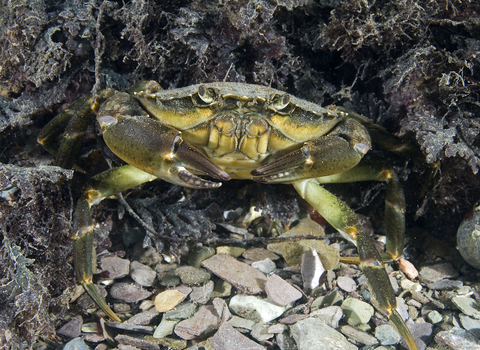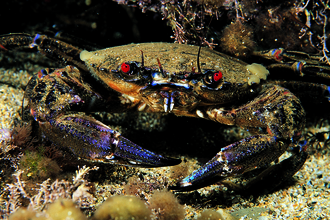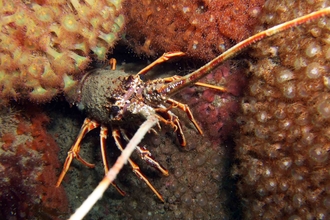
Shore crab ©Paul Naylor www.marinephoto.co.uk
Shore crab
This crab is common around all of the UK. If you've ever been rockpooling or crabbing, it's probably the shore crab that you've met.
Scientific name
Carcinus maenasWhen to see
January to DecemberSpecies information
Category
Statistics
Shell width: Up to 9cmConservation status
Common
About
The shore crab is the most common crab encountered on our shores. Normally a green-ish colour, shore crabs are easily found in rockpools or on the end of crab lines dangled into shallow waters. They aren't exactly picky eaters and will feast on anything and everything they come across, including seaweed, mussels, barnacles and even smaller crabs. If you spot a crab with an orange mass on its stomach, don't be alarmed, they are eggs! Females carry the fertilised eggs with them to protect them from predators. A female with eggs is known as "berried". Although a native species here, the shore crab has become an invasive species in many other parts of the world, including Australia, South Africa and California.How to identify
The most common crab on our beaches, normally green-ish in colour but it can be orange or even red. It is medium sized and can be identified by the pattern of spikes on its shell (carapace). The shore crab has five upturned spikes on each side of the carapace and 3 rounded lobes between the eyes (5,3,5). The different colourations are related to the crab's age and whether it is breeding season.Distribution
Found around all UK coasts.Did you know?
The shore crab sometimes falls victim to one of nature's weirdest parasites. The crab hacker barnacle lands on the shore crab and castrates it, before using it as a host to carry the barnacle's eggs instead! You can tell a parasitised shore crab as they have a smooth pale mass on their underside, exactly where a female would normally carry her mass of orange eggs!How people can help
When rockpooling, be careful to leave everything as you found it - replace any rocks you turn over, put back any crabs or fish and ensure not to scrape anything off its rocky home.If you want to learn more about our rockpool life, Wildlife Trusts around the UK run rockpool safaris and offer Shoresearch training - teaching you to survey your local rocky shore. The data collected is then used to protect our coasts and seas through better management or through the designation of Marine Protected Areas.
Watch
Shorecrab (https://vimeo.com/642330912)
Nick Upton




